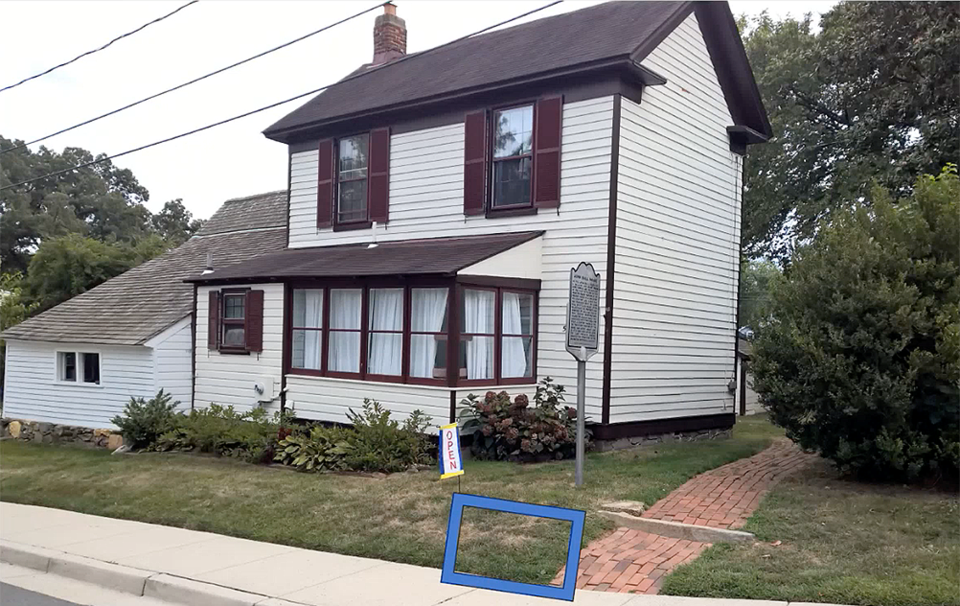The Arlington Historical Society’s plan to put “stumbling stones” – memorial markers – across the community, honoring those who were enslaved in what today is Arlington, received a positive response from a county-government advisory panel.
But the proposal also drew questions about the size and materials to be used.
As part of its “Memorializing the Enslaved in Arlington 1669-1865” initiative, the historical society and Black Heritage Museum of Arlington have identified 1,500 individuals; information (names, birth and death dates, etc.) is known in full or part for about half of them.
To honor their memory, the organization hopes to place brass plaques, roughly 4 inches square, in the locations where they had lived. A pilot effort, honoring a man and a woman, is slated for the Ball-Sellers House, an historic property owned by the society.
The matter was discussed at the Aug. 2 meeting of the Design Review Committee of the Historical Affairs and Landmark Review Board (HALRB).
Committee members liked the concept, but several voiced concern about the design proposed by the historical society; the durability of brass as the choice for the markers; and the size of the markers, which to several seemed too small.
Serena Bolliger, a county-government historic-preservation specialist, said that because of the potential number of markers that eventually could be implanted in the ground, a smaller size might be both visually and financially preferable.
“It’s meant to be quite subtle, because they’re going to want to put them all over the county,” Bolliger said.
No representatives from the historical society were at the meeting; the issue is likely to be sent to the full HALRB for discussion during a coming meeting.
Placement of the markers on private property, and their designs, likely would not require county-government authorization, although for properties that are, or are part of, local historic districts, HALRB approval likely would be required. Government approval for positioning and design would be mandated for markers to be placed on public property or in a public right-of-way.
In the first half of the 1800s, a period for which documentation is generally available, between 260 and 300 people were held in bondage in modern-day Arlington, which from 1800 until 1847 was part of the District of Columbia before being returned (as “Alexandria County”) to Virginia. That represented between 20 and 30 percent of the total population.
“Memorializing the Enslaved in Arlington” project information can be found at bit.ly/3ObPm8O.



